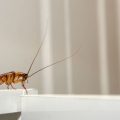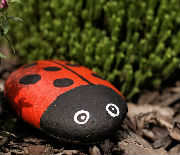Spotting a rat scurrying around your home or business can be distressing, but a rat’s nest can be even more alarming. Rat nests can pose a fire hazard because they are often made up of flammable materials such as paper and cloth. Besides causing significant property damage due to nest building, disturbing a rat nest also presents a health hazard.
So, if you:
- Are wondering what happens if you try to destroy a rat’s nest;
- Trying to figure out what to do if you disturb a nest of rats accidentally;
- Searching for the best possible way to get rid of rats nest;
Continue reading to find out what happens if you try to remove a rat’s nest on your own.
Table of Contents
What do rat nests look like?
Rat nests look similar to bird’s nests, but they are usually built from soft materials found around the house, such as paper products, cardboard, and even shredded cloth.
Typically, rats nest in warm, concealed areas near food sources to sustain their young. While rats are remarkably resilient, they depend on certain conditions to build nests.
A strong unpleasant odour is one possible indication of a rat’s nest. If you’re unsure whether the nest belongs to rats, you can look for other signs of an infestation, such as chewed electric cables, furniture legs, insulation, or food packaging.
How can you tell where a rat’s nest is located?
A common hiding place for rats is beneath the decking, where they can build their nests in hidden areas. Additionally, sheds and outbuildings provide rats with suitable habitats for burrowing, and you can identify entrances by looking around the edges of these structures.
Rats also prefer burrowing next to solid surfaces such as walls. When inspecting garages, it’s essential to check for gaps around door frames or wooden doors with gnawed holes at the bottom, as rats can gain entry through such openings.
What happens if you disturb a rat’s nest?
A rat’s nest in your home can be frightening; however, you should avoid the impulse to get rid of it immediately. Disturbing a rat’s nest can have several potential consequences.
- Biting – The rat is not an aggressive creature but known for being territorial and stubborn. Stress can make rats defensive and exhibit violent behaviour such as biting and chasing. There is a possibility that rats carry dangerous pathogens that can easily be transmitted to humans.
- Infection – A rat bite can pose a significant health risk to a person. Rats can carry bacteria and viruses in their saliva that can cause infections such as rat-bite fever, which can be potentially life-threatening if left untreated. Additionally, if the wound is not properly cleaned or disinfected, it can become infected, leading to further health complications.
- Relocation – Attempting to destroy a rat’s nest could result in the rats escaping to another area of the house, potentially leading to a more challenging infestation to resolve. Besides the risk of being attacked or contracting a disease from disturbing a rat’s nest, making an infestation worse could cause rats to breed in other crevices of the house, leading to more damage.
How many rats are usually in a nest?
Typically, rats live in large groups inside dwellings with easy hiding places for nests. Rat nests typically house 5 to 10 rodents, although the number may vary based on the nest’s age or the offspring’s presence. They often form colonies by creating multiple nests close to each other, which can increase the number of rats within an area.
Do rats return to the same nest?
The majority of rats will still return to the nest no matter how disturbed it is. The territorial nature of rats makes them go to great lengths to establish a home. When they find a nesting area that provides them with what they need to survive, they won’t abandon it easily.
It is unlikely for rats to leave their nest without the intervention of a pest control professional to provide treatment and control measures.
Methods to get rid of a rats nest
Calling a professional pest control company is the best way to get rid of a rat’s nest. However, in case you have decided to do it yourself, below are some helpful tips to safely remove a rat nest:
- Eliminate the rats – To remove a rat’s nest, all rats in the area must first be eliminated using traps or poison. Once you’re confident that all rats are gone, you can begin removing the nest.
- Remove the nest – When removing rat nests, it is important to take precautions to avoid any potential hazards. Safety gear such as gloves and goggles should be worn and is necessary to prevent inhalation of dust from the nest that may contain rat droppings. These droppings can harbour disease-causing organisms, making them potentially bio-hazardous.
- Clean the area – Using bleach, clean and sanitise the nest and surrounding areas. Dispose of all materials, including the nest, in an outdoor bin. Removing a rat infestation and its nest can be challenging and unsafe, particularly in difficult-to-reach areas. In such cases, once again, it’s best to seek the assistance of professional pest controllers.
Learn How to Get Rid of Rats in Your Home
How to prevent rats from nesting on your property
Disturbing a rat’s nest carries multiple risks, and it’s best to take preventative measures to minimize the chances of rat infestations. Rats are known for building their nests in areas with easy access to food, water, and shelter, often found in people’s homes.
Ensure that all waste and garbage are stored in sealed bins and seal any openings inside and outside your home and shed to prevent rats from entering. Remember that rats can fit into spaces as small as one inch, so check for significant gaps under doors or cabinets and seal them off.
Furthermore, it’s essential to regularly inspect your dwellings for any signs of rats, such as small bite marks and accumulated debris in corners where rats may be storing materials to build their nests.
Declutter and tidy your living space to discourage rats from nesting in your house. The same goes for taking good care of your garden, especially during cold weather when rats seek shelter.
Look for signs of rat presence in common places such as sheds, compost piles, and firewood stacks. Avoid leaving rubbish outside and keep debris to a minimum to avoid attracting rats. The following tips will help you keep rats out of your garden.
Takeaways
- In response to stress, rats might exhibit violent behaviours such as biting and chasing;
- There are multiple risks associated with disrupting a rat’s nest;
- Getting in touch with a professional pest control company is the best way to get rid of a rat’s nest;
- Rat infestations can be prevented by taking preventative measures, such as decluttering, securing waste bins, and sealing gaps and holes;
Image source: OlhaSemeniv / Shutterstock.com











Leave a Reply